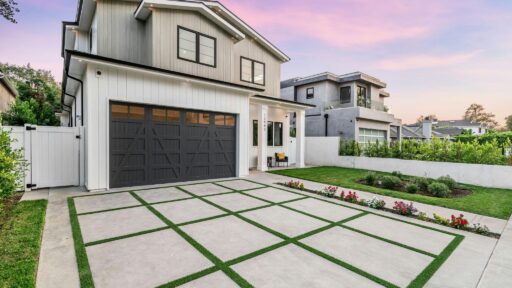Dallas is known for its extreme weather changes throughout the year. From blazing summer heat to powerful storms, the climate plays a major role in the condition and durability of residential roofs. Understanding how the weather in this region impacts roofing materials can help homeowners protect their investment and extend the life of their roofs.
The Impact of Intense Heat on Roofing Materials
Dallas summers bring soaring temperatures that can exceed 100 degrees Fahrenheit regularly, creating challenges that every Dallas roofer knows well. This kind of heat puts a lot of stress on roofing materials. Asphalt shingles, a common choice for residential roofs, tend to dry out and become brittle under intense sunlight. Over time, this leads to cracking, curling, and even granule loss. These issues reduce the roof’s ability to shed water effectively, increasing the risk of leaks.
Heat also causes roofing materials to expand during the day and contract at night. This constant movement can weaken nails and fasteners, loosening shingles and increasing vulnerability to wind damage. Metal roofing panels can also warp or fade, compromising their protective properties.
Storms and Their Role in Roof Wear
Dallas often faces storms in spring and fall. High winds, hail, and heavy rain put stress on roofs. Gusts can lift or tear shingles, while hail may dent or crack roofing surfaces. Damage isn’t always obvious, but it can cause leaks and structural problems over time. Rainstorms bring extra challenges. Clogged gutters or roof damage can cause water to pool. Standing water may seep into the roof deck, leading to rot, mold, or mildew. Constant moisture weakens roofing materials and shortens their lifespan.
Effects of Seasonal Temperature Fluctuations

The temperature swings between hot summers and chilly winters add extra strain on roofs. While winters in Dallas are milder than in northern states, occasional cold snaps can cause roofing materials to contract and widen existing cracks. Ice formation is rare but can occur in shaded spots, leading to water infiltration when it melts. Repeated expansion and contraction, known as thermal cycling, speed up material wear. Over time, small cracks can develop, leading to costly repairs or even roof replacement.
The Role of Roof Design and Ventilation
Proper roof design and ventilation also influence how well a roof withstands Dallas weather. Roofs with adequate ventilation allow heat and moisture to escape from the attic, reducing the risk of overheating and condensation. This lowers the chance of mold growth and material deterioration. Sloped roofs tend to shed water more effectively than flat roofs, decreasing water pooling. Choosing the right slope and materials suited for the region enhances durability against storms and heat damage.
Choose the Right Roofers in Dallas
Residential roofing in Dallas requires expertise that accounts for local weather patterns. Selecting a professional experienced in handling the climate’s challenges ensures proper installation and maintenance. Good roofing services provide thorough inspections to identify damage caused by heat, wind, or moisture. They offer installation, maintenance and repair services that extend the lifespan of roofs.
A skilled roofer will recommend materials best suited for these types of weather conditions. For example, impact-resistant shingles or metal roofing can offer enhanced protection against hail and heat. Regular maintenance helps prolong roof life and prevent costly problems.
The combination of intense heat, storms, and temperature fluctuations poses significant challenges to residential roofs. Understanding these factors helps in selecting durable materials, hiring knowledgeable roofing professionals, and performing regular maintenance. Such efforts can significantly extend the lifespan of a roof despite the demanding weather. With the expertise of a trusted Dallas roofer and proper care, homeowners can protect their roofs and enjoy lasting performance for years to come. Regular inspections remain key to catching small issues before they turn into costly repairs.







